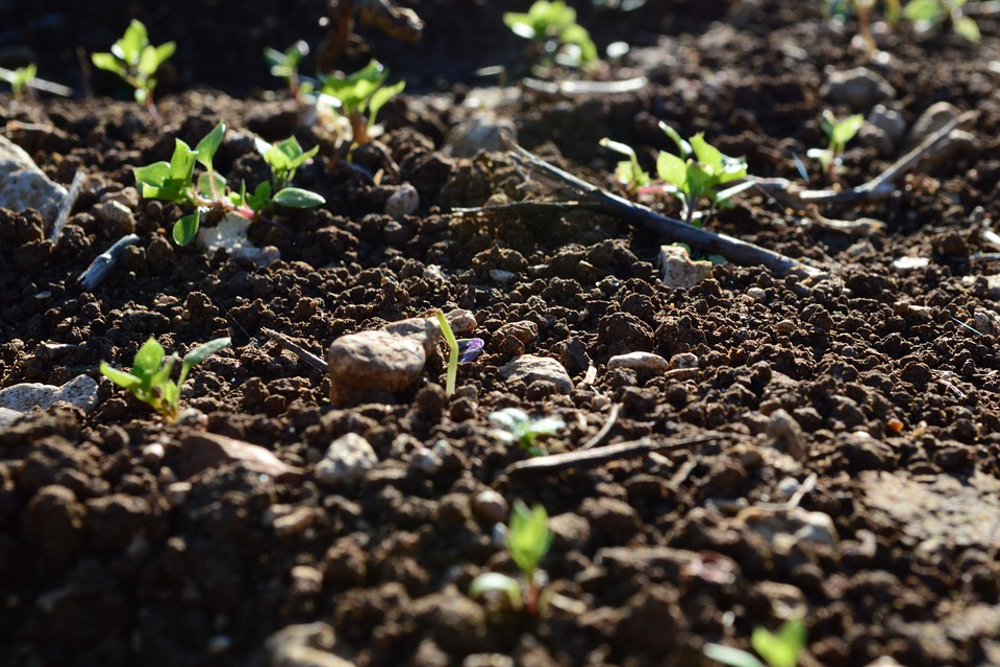
Soil Is the Solution
It’s easy to take soil for granted. That is, until you lose it. The dirt beneath your feet is arguably one of the most under-appreciated assets on the planet. Without it, life would largely cease to exist while, when at its prime, this “black gold” gives life.
In nature, plants thrive because of a symbiotic relationship with their surrounding environment, including mircroorganisms in the soil.
The rhizosphere is the area immediately around a plant’s root. It contains microorganisms that thrive on chemicals released from the plant’s roots. These chemicals, known as exudates, include carbohydrates, phytochemicals and other compound
May 10, 2016 | Source: Mercola | by Dr. Joseph Mercola
It’s easy to take soil for granted. That is, until you lose it. The dirt beneath your feet is arguably one of the most under-appreciated assets on the planet. Without it, life would largely cease to exist while, when at its prime, this “black gold” gives life.
In nature, plants thrive because of a symbiotic relationship with their surrounding environment, including mircroorganisms in the soil.
The rhizosphere is the area immediately around a plant’s root. It contains microorganisms that thrive on chemicals released from the plant’s roots. These chemicals, known as exudates, include carbohydrates, phytochemicals and other compounds.
In exchange for the exudates, the root microbiome supplies the plant with important metabolites for health, which, along with exposure to pests and pathogens, helps plants produce phytochemicals.
A well-fed root microbiome will also supply plants with ample nitrogen (N), phosphorus (P) and potassium (K) — the three ingredients that also make up most synthetic fertilizer (NPK).
Unfortunately, while nature’s system results in handsome rewards, including more nutritious foods and less environmental pollution, modern-day farmers have largely become stuck in a cycle of dousing crops with synthetic chemicals tthankshat destroys the soil and, ultimately, the environment.
Why Synthetic Fertilizers Are Ruining the Planet
Synthetic fertilizers make sense in theory, and they do make plants grow bigger and faster. The problem is that the plants are not necessarily healthier. In fact, they miss out on the symbiotic relationship with their root microbiome.
Because they’re being supplied with NPK, the plant no longer “wastes” energy producing exudates to feed its microbiome.
Therefore, it receives fewer metabolites for health in return. The end result is plants that look good on the outside but lack minerals, phytochemicals and defenses against pests and disease on the inside.
Further, as reported by Rick Haney, a U.S. Department of Agriculture (USDA) soil scientist, less than 50 percent of synthetic fertilizers applied to crops are used by the plants. Haney told Orion Magazine:1
“Farmers are risk averse … They’ve borrowed a half million dollars for a crop that could die tomorrow. The last thing they want to worry about is whether they put on enough fertilizer. They always put on too much, just to be safe.”
The excess fertlizer runs off into the environment, with disastrous effects. As fertilizer runs off of farms in agricultural states like Minnesota, Iowa, Illinois, Wisconsin, Missouri and others, it enters the Mississippi River, leading to an overabundance of nutrients, including nitrogen and phosphorus, in the water.
This, in turn, leads to the development of algal blooms, which alter the food chain and deplete oxygen, leading to dead zones. One of the largest dead zones worldwide can be found in the Gulf of Mexico, beginning at the Mississippi River delta.2 Fisheries in the Gulf of Mexico have been destroyed as a result.
